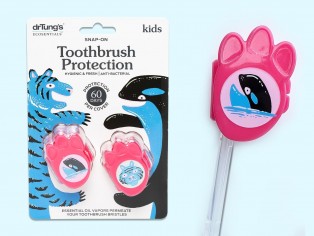Cavity Prevention and Safe Treatment for Kids
As our kids grow, we love to journal the many milestones of their lives….their first smile, their first tooth, their first step, etc. Of course, there are some milestones we aren’t looking forward to—their first cavity. Certainly, being proactive and practicing preventive care are the best steps to reducing the odds; however, cavities may still surface so it’s good to know your options.
What is a Cavity?
A cavity develops when a tooth decays, or breaks down. A cavity is a hole that can grow bigger and deeper over time. Cavities are also called dental caries, and if you have a cavity, it's important to get it repaired. (Read our blog about silver nitrate treatment for kids' cavities.) The cause is plaque—that germy substance that sets the stage for tooth decay. Bacteria in your mouth make acids and when bacterial plaque clings to your teeth, the acids can eat away at the enamel (the outermost layer of the tooth).
Cavity Prevention
Naturally, prevention is the best defense. Our last blog talked about how to brush properly and when to start brushing. In addition to proper brushing, we also touched on flossing and how that is an integral element of your child’s complete oral health care. Diet also plays a huge role, and limiting sugary, gummy foods will not only help to reduce cavities, but is also beneficial to the overall health of your child. (It’s always important to think about health holistically, as all systems are interrelated, so if it’s good for your oral health, it’s good for your overall health!) Some holistic dentists look at what our ancestors ate, because their nutritional habits were designed to work for our bodies. i.e. we can naturally be exposed to all-important vitamins, like A, D, and K2, which allow us to build and maintain strong skeletal bones and teeth.((https://www.mindbodygreen.com/articles/the-foods-this-dentist-doesnt-want-you-to-eat)) So choosing a green apple or a handful of blackberries is more natural and healthy than a cookie packed with added, unnatural sugars. Lastly, remember to get your child an early start on regular pediatric dental checkups and care—the first appointment should be set around his/her first birthday, or when the first tooth erupts. (Check out these resources to find a holistic dentist in your area.)
Uh-oh…I Got a Cavity
Although these are words you don’t want to hear, you’ll want to know what steps to take. Your pediatric dentist will advise on proper treatment based on size and severity of the cavity. Today, there are more options than even a few years ago, including a quick and easy treatment with silver nitrate. Traditionally, the dentist will remove the decayed portion of the tooth and then “fill” the area that was removed. Different types of materials can be used including gold; porcelain; silver amalgam (which consists of mercury mixed with silver, tin, zinc, and copper); or tooth-colored, plastic, and materials called composite resin fillings. It is imperative you understand which material your dentist is recommending. Some dentists may suggest silver amalgam since it is generally lower in cost and covered by many insurance carriers. PLEASE BE WARNED: dental amalgam is approximately 50% mercury, a known neurotoxin and reproductive toxin. Amalgam releases mercury vapors throughout its lifecycle, especially when
- the dentist places the amalgam in your tooth
- chewing food or gum
- brushing your teeth
- grinding your teeth
Say NO to Mercury
As a result, people with amalgam fillings have higher levels of mercury in their bodies than people without amalgam fillings. Children’s developing brains and neurological systems are particularly susceptible to the neurotoxic effects of amalgam’s mercury vapor. The U.S. Food and Drug Administration (FDA) admits that there is no evidence that amalgam is safe for children: “Very limited to no clinical information is available regarding long-term health outcomes in pregnant women and their developing fetuses, and children under the age of six, including infants who are breastfed.” Many countries are banning amalgam use in children((http://www.toxicteeth.org/mercuryFillings.aspx)). In fact, as of July 1, 2018 three European Union institutions (the European Parliament, European Commission and the Council of the European Union) will ban dental amalgam fillings use in children under 15 years old and in pregnant and breastfeeding women(()) .((http://www.dmdtoday.com/news/eu-bans-dental-amalgam-use-in-children-pregnant-and-breastfeeding-women)) So make sure you know what materials your dentist will use. There are several safer alternatives so why risk your child’s health? A cavity shouldn’t lead to health issues or chronic illness for your child. Have an open discussion with your child’s dentist on this matter. Be prepared to find an alternate dentist if you are not comfortable with the options he or she is recommending.
Something to Smile About AFTER Cavity Treatment
Treating a child's first cavity may not exactly be a ride on a carousel. So here’s a fun coloring page for your brave little angel to remind her to take extra special care of her teeth, and hopefully avoid more cavities in the future! And by the way, coloring is a great way for her to improve motor skills, stimulate creativity, help develop handwriting and relieve stress! Just download and print. Check out our brand new Kids Fun Page for more great activities for your kids!


